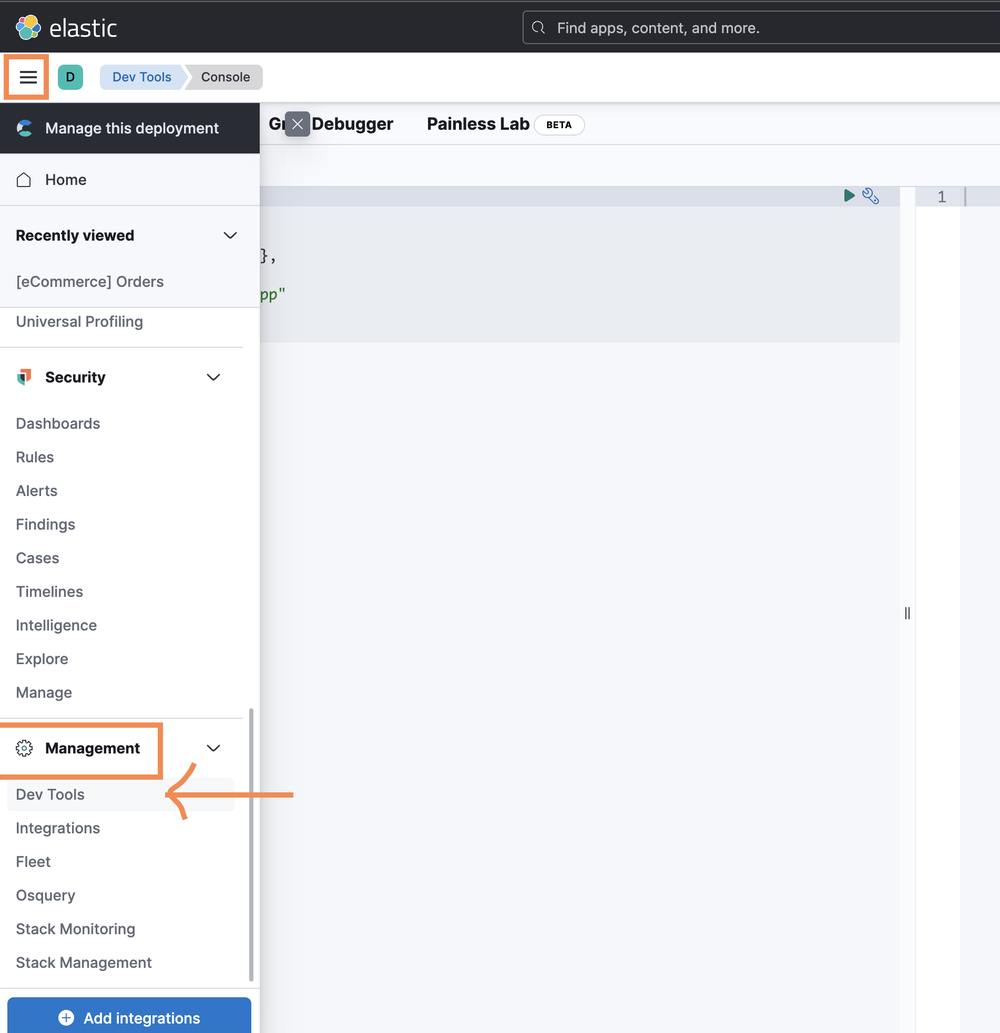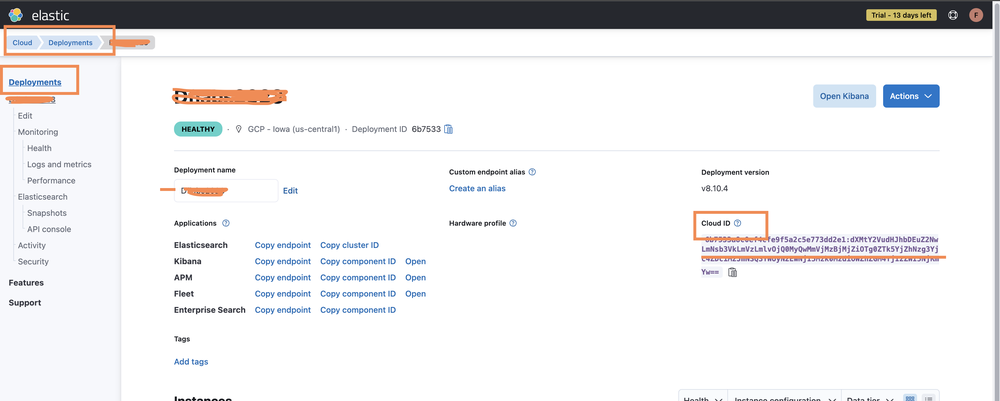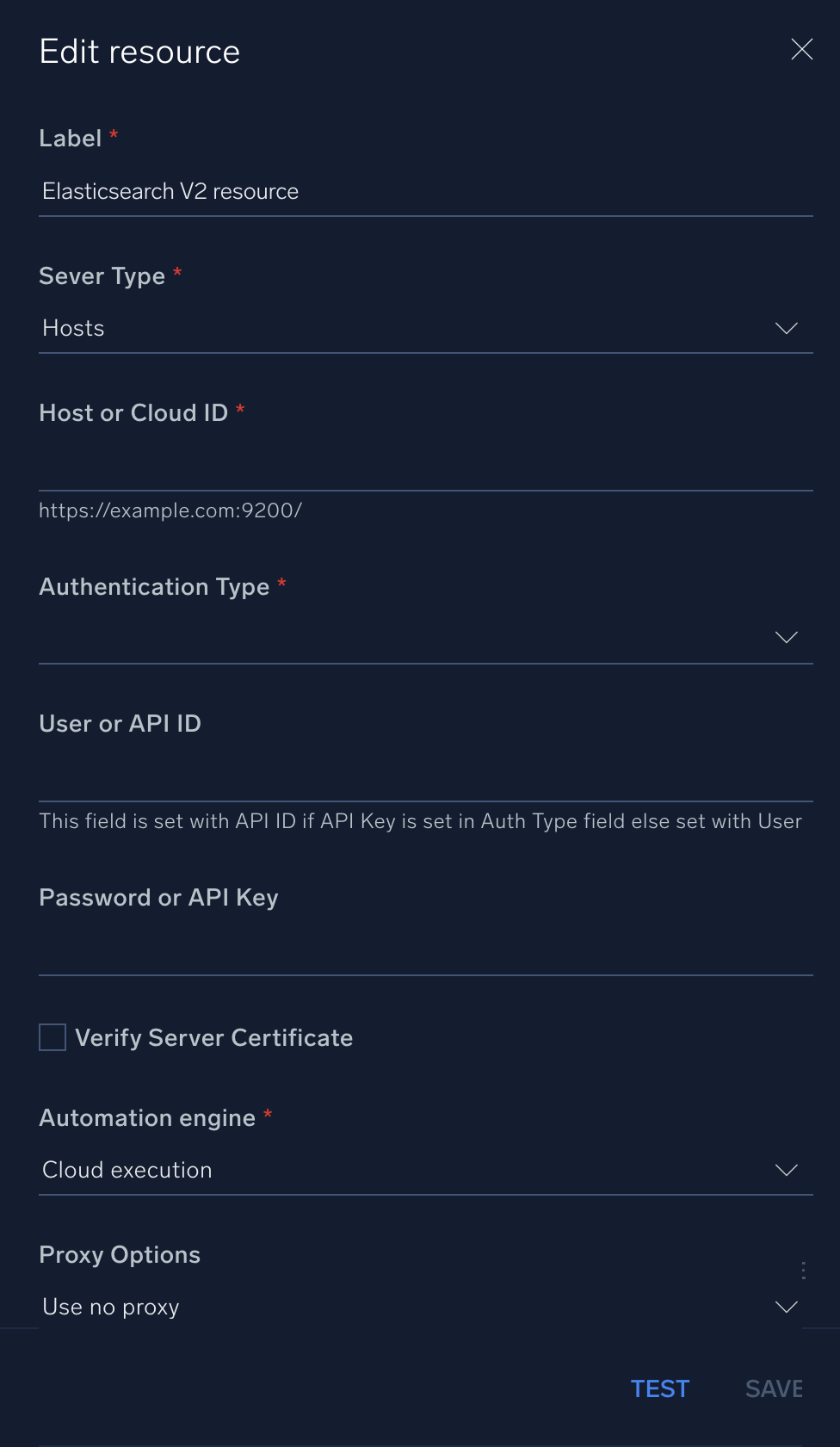Elasticsearch V2

Version: 1.3
Updated: Nov 03, 2023
Query Elasticsearch
Actions
- Query (Enrichment) - Query Elasticsearch using a query string.
- Get Indices (Enrichment) - Get a list of indices from Elasticsearch.
- Get Indices Stats (Enrichment) - Get a list of indices stats from Elasticsearch.
- Get Indices Fields Mappings (Enrichment) - Get a list for fields mappings from Elasticsearch.
- Query Extended (Enrichment) - Elasticsearch Query working with hidden Indices.
Elasticsearch Configuration
To retrieve the API Credentials, refer to the guide.
Retrieve the API Key/ID using the console, Log in to the Elasticsearch Service Console.

On the deployment overview page, copy down the Cloud ID.
External Libraries
Configure Elasticsearch V2 in Automation Service and Cloud SOAR
Before you can use this automation integration, you must configure its authentication settings so that the product you're integrating with can communicate with Sumo Logic. For general guidance, see Configure Authentication for Automation Integrations.
How to open the integration's configuration dialog
- Access App Central and install the integration. (You can configure at installation, or after installation with the following steps.)
- Go to the Integrations page.
Classic UI. In the main Sumo Logic menu, select Automation and then select Integrations in the left nav bar.
New UI. In the main Sumo Logic menu, select Automation > Integrations. You can also click the Go To... menu at the top of the screen and select Integrations. - Select the installed integration.
- Hover over the resource name and click the Edit button that appears.

In the configuration dialog, enter information from the product you're integrating with. When done, click TEST to test the configuration, and click SAVE to save the configuration:
-
Label. Enter the name you want to use for the resource.
-
Server Type. Select the type of verification depending on the type of Elasticsearch server you use, either hosted (select Hosts) or cloud (select Cloud ID).
-
Host or Cloud ID. Enter your Elasticsearch hostname (if you selected Hosts above) or the cloud ID (if you selected Cloud ID).
-
Authentication Type. Select Basic Authentication, No Authentication, or API Key.
-
User or API ID. Enter an Elasticsearch admin username (if you selected Basic Authentication above) or enter an Elasticsearch API ID (if you selected API Key above).
-
Password or API Key. Enter the admin user password (if you selected Basic Authentication above) or enter the API key corresponding to the API ID (if you selected API Key above).
-
Verify Server Certificate. Select to validate the server’s SSL certificate.
-
Automation Engine. Select Cloud execution for this certified integration. Select a bridge option only for a custom integration. See Cloud or Bridge execution.
-
Proxy Options. Select whether to use a proxy. (Applies only if the automation engine uses a bridge instead of cloud execution.)
- Use no proxy. Communication runs on the bridge and does not use a proxy.
- Use default proxy. Use the default proxy for the bridge set up as described in Using a proxy.
- Use different proxy. Use your own proxy service. Provide the proxy URL and port number.

For information about Elasticsearch, see Elasticsearch documentation.
Change Log
- November 17, 2020 - First upload
- November 10, 2022 (v1.2) - New Action: Query Extended
- November 3, 2023 (v1.3)
- Updated the integration with Environmental Variables
- Improved error handling
- Removed leading/trailing spaces